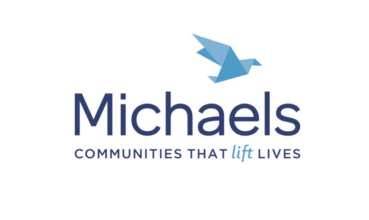Storytelling is increasingly shaping how homes are sold in today’s competitive real estate market. Inna Agujen, Sales Associate at Westport Real Estate, knows this better than most. After ...
North Port's Real Estate Reality: A Local Agent's Perspective on Market Shifts




“The market has declined approximately 15-20% compared to listing prices over the past nine months,” says Nicolai Todosiciuc, a real estate agent with Realty One Group MVP serving the North Port, Florida area.
In a housing market that’s cooling after pandemic-fueled highs, Todosiciuc offers a ground-level perspective that cuts through national headlines to reveal the nuanced reality of Florida’s real estate landscape in 2025.
Market Realities: A Gradual Correction
While Florida’s real estate market has been the subject of much national discussion, Todosiciuc emphasizes that conditions vary significantly by region. “If we compare Florida, let’s say Miami, Tampa, and Sarasota/North Port area, it’s different. Miami could be performing somewhat better.”
In his specific market of North Port, the trend is clear: “The market has declined approximately 15-20% compared to listing prices over the past nine months.”
Despite this overall decline, the market remains varied. “There are still homes selling at higher prices. We continue to see homes sold for $240-245 per square foot for custom built properties, but we also see homes selling for around $210, or smaller homes for $195-200.”
The COVID Bubble and Its Aftermath
When asked about the factors driving price decreases, Todosiciuc points to the artificial inflation that occurred during the pandemic. “COVID created an unsustainable price bubble. The prices increased rapidly, but they weren’t based on market fundamentals. It was artificial because inventory was severely limited.”
This rapid appreciation created affordability challenges for local buyers. “It reached a point where local residents wanted to buy homes but couldn’t afford them because prices had become unreasonable.”
The current correction may eventually create opportunities for these sidelined local buyers. “I believe prices are adjusting downward. Many locals who previously couldn’t afford to buy may find opportunities by year-end, especially if interest rates decrease.”
The Interest Rate Impact
A significant factor affecting the market is the high interest rate environment. “Right after New Year, for the first time in the past four or five years, it’s actually cheaper to rent than to buy because the interest rate is high,” Todosiciuc explains.
This financial reality has shifted buyer behavior. “Many people want to buy, but they can’t afford it because the mortgage payment exceeds rent. For example, if your payment is $2,900 but you could rent for $2,300, and avoid responsibility for repairs.”
Todosiciuc has witnessed this shift firsthand: “I had buyers who began looking at homes, received pre-approval, and then realized they couldn’t afford to buy. They decided to rent for a year to monitor market conditions. They still intend to buy, but due to high rates, they’re waiting.”
New Construction Surge
One of the most significant market dynamics Todosiciuc has observed is the surge in new construction inventory. “We have numerous builders with homes available for sale,” he explains.
This increase in inventory isn’t necessarily due to new projects starting recently, but rather the culmination of developments that began years ago. “These aren’t projects that began this year. Most started three or four years ago, but as large developments, they take considerable time to complete.”
The result is a market with abundant options. “Two and a half or three years ago, a search for homes in the $350-370K range might yield 10-15 properties. Today, the same search returns 100-120 homes.”
This abundance has created a paradoxical challenge for buyers. “The decision-making process has become more difficult because there are too many options. It’s like choosing shoes. If you have two pairs, the decision is simple. But with 100 or 200 options, selection becomes overwhelming.”
Condos, HOAs, and Rising Costs
The condo market has been particularly affected by rising costs. “Many condo owners are struggling with high HOA fees. Over the past two to three years, HOA fees have increased substantially, with some reporting 30-40% increases.”
These increases are compounded by other rising expenses. “Insurance costs have also increased significantly. Taxes, insurance, and HOA fees have all risen. Consequently, many condo owners are questioning whether to hold their properties or sell.”
The Slowing of Out-of-State Migration
While Florida has seen significant migration from other states in recent years, Todosiciuc notes that this trend has moderated. “Compared to 2022-2023, we previously had substantially more people relocating to this area.”
“Most of my clients come from Washington State, California, and Oregon. I also have numerous clients from Illinois,” Todosiciuc notes. This influx of out-of-state buyers became particularly pronounced during the COVID-19 pandemic when investors were actively purchasing land and homes in the area.
The influx hasn’t stopped entirely. “Recently, I worked with a couple from Maryland who purchased a home for retirement. Out-of-state buyers continue to arrive, but the percentage has decreased compared to two or three years ago.”
Weather Events and Market Psychology
Media coverage of hurricanes and other severe weather events has also influenced market dynamics. “Some potential buyers became apprehensive after recent storms. Media coverage tends to amplify these events,” Todosiciuc observes.
This coverage can create misconceptions about the extent of damage. “Our relatives in South Carolina and other states watch media reports and develop the impression that Florida has been devastated because of storm coverage. In reality, storms primarily affected coastal areas.”
These weather events create temporary market slowdowns. “After each storm, the market typically slows for three to four months as buyers hesitate. Then people realize the situation wasn’t as severe as portrayed, and migration to Florida resumes.”
Investment Opportunities and Challenges
For investors considering the North Port market, Todosiciuc suggests caution, particularly for fix-and-flip strategies. “Currently, investors appear to be waiting for further price decreases due to high inventory levels.”
The declining market creates additional risk for flippers. “If an investor purchases a house for $250,000 and spends months on renovations while prices continue to fall, their profit margin diminishes significantly.”
He’s seen this challenge firsthand. “One investor recently purchased and renovated a property, then listed it for sale. Due to declining prices, he barely broke even. Many investors are waiting for further market corrections because current conditions present substantial risk.”
Advice for Potential Buyers
When clients ask whether they should buy now or wait, Todosiciuc takes a pragmatic approach. “I never pressure people to buy. If you have stable employment and can afford a home, particularly if you have children in school and need to establish roots, purchasing now makes sense.”
However, he recognizes that timing the market is a legitimate consideration for some. “If you believe prices will continue to decline and you’re willing to wait a year or two before buying, I’ll be available to assist you when you’re ready.”
From Cable Technician to Real Estate Professional
Todosiciuc’s path to real estate began unexpectedly during his time as a Comcast technician in 2014. “I did a service call at one client’s home. She was a real estate agent, and we talked briefly. She told me, ‘I think you should become a real estate agent. You’re good with people, knowledgeable,'” he recalls.
Though the seed was planted, Todosiciuc waited until 2019 to pursue his license, as his wife was completing her education as a dental hygienist. “In 2019, my wife was working, and one of the dental assistants got her license. We talked to her, and she said, ‘Man, it’s good. I like it.’ That was the second trigger.”
By 2020, Todosiciuc had obtained his license and began working part-time in real estate while maintaining his position at Comcast. As his client base grew, he eventually transitioned to full-time real estate work, focusing primarily on the North Port, Venice, and Sarasota areas of Florida.
Speaking four languages has helped Todosiciuc build a diverse clientele. “I work with many Slavic people from Ukraine, Russia, and others,” he explains. However, his client base extends well beyond these communities.
This balanced perspective reflects the complex reality of today’s real estate market in North Port, a market that’s adjusting from pandemic-era highs while still offering opportunities for well-positioned buyers with appropriate timing.
Similar Articles
Explore similar articles from Our Team of Experts.


“What gets measured gets done. You can’t evaluate what you can’t measure.” – Larry Stone, Santa Clara County Assessor In Silicon Valley, where tech innovations and ...


With over 50% of outstanding mortgages below 3.5%, the traditional resale market has stalled. In this challenging environment, Jome CEO Dan Hnatkovskyy has identified and capitalized on a cr...


From pioneering affordable housing programs in the early 1970s to managing a current $5.1 billion development pipeline, The Michaels Organization has established itself as a force in the aff...


In a recent conversation with Craig Foley, a veteran real estate professional with over two decades of experience, we delved into the evolving landscape of sustainability in real estate. Fol...




